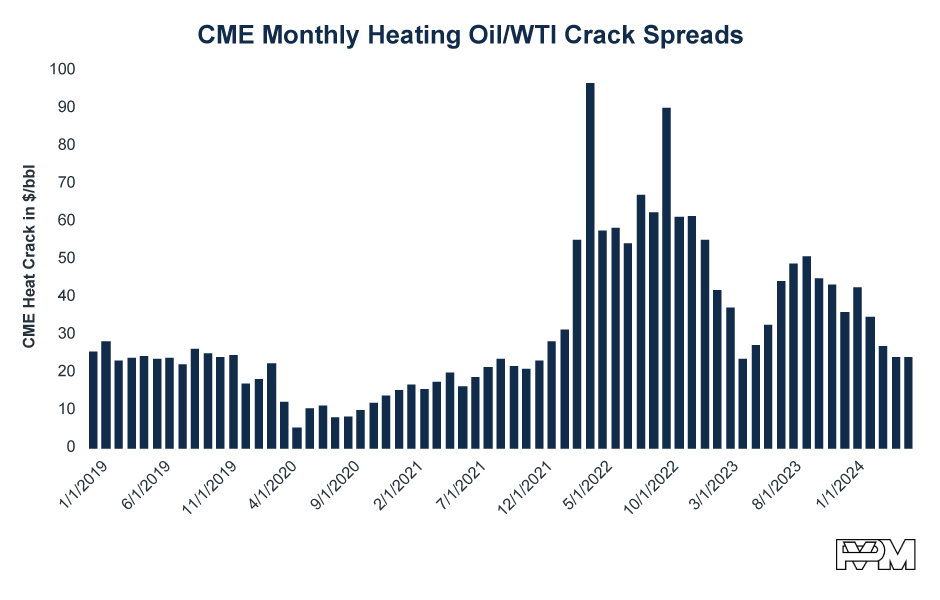Crude oil is a worthless commodity. Its value is derived from the prices of products made from it. Refiner’s thirst for this feedstock is dependent on consumer and industrial demand for refined fuel. A crucial product is distillate, the collective name chiefly for diesel fuel and partly for heating oil. Its differential to CME Group’s flagship Crude Oil contract, WTI, rallied to an uncharted territory in the immediate afterwards of Russia’s invasion of Ukraine but has gradually been trending lower in the past two years.
Seasonality is certainly a factor in this retreat. Distillates tend to gain traction when the heating season arrives in the northern hemisphere. There is, however, another and more significant change affecting this product and the shift is structural. Demand is on the descent, particularly in the U.S. The EIA estimates that while in 2018 4.146 mbpd of distillate was consumed nationwide last year only 3.933 mbpd was demanded and further erosion is pencilled in for this year and beyond. The American Trucking Association (ATA) saw its tonnage index decline 2.4% in Q1 2024 adversely impacting diesel consumption. U.S. West Coast demand for diesel fell to 28-year low in January. U.S. distillate consumption has likely reached its summit.
The major reason for this peak is the increasing weight of biofuel, especially renewable diesel, in the middle distillate pool. U.S. refiners were churning out 300,000 bpd of biodiesel in Q1 this year. Other contributing factors are Europe’s, the major U.S. diesel export market, fast adaptation to declining Russian availability of the product, rising global refining capacity, which makes U.S. distillates less competitive and, of course, the transition from fossil fuel to renewables plays its role, too.
CME Group Heating Oil is currently fetching a premium of around $24/bbl against WTI. It is on the high side of the seasonal pre-2022 norm. However, due to discernible demand constraints U.S. inventories are expected to increase above historic standards keeping the value of the Heat crack under pressure. Because of the prevalent change in demand structure any jump in value over historic averages will be met by intense selling of Heating Oil versus of WTI.
Stay in the know
Keep up with the crude oil markets. Get biweekly analysis from PVM, the leading oil instrument broker – courtesy of CME Group.
Already have an account? Log in
By clicking above, you are subscribing and agreeing to receive the specified content. I understand that I can unsubscribe at any time.
This site is protected by reCAPTCHA and the Google Privacy Policy and Terms of Service apply.
All examples in this report are hypothetical interpretations of situations and are used for explanation purposes only. The views in this report reflect solely those of the author and not necessarily those of CME Group or its affiliated institutions. This report and the information herein should not be considered investment advice or the results of actual market experience.

